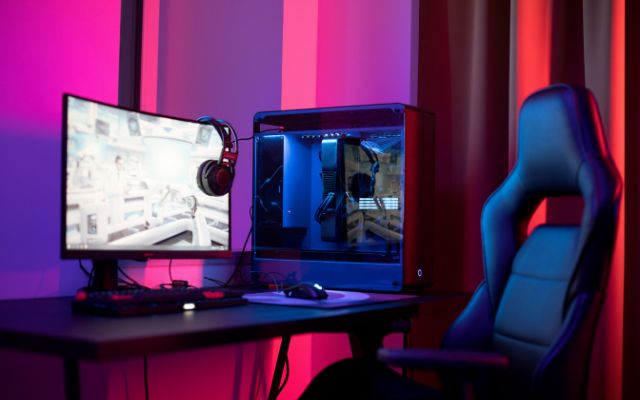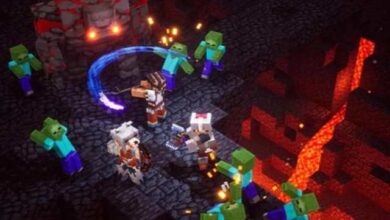How to build your own gaming PC

Building your own gaming PC can be a rewarding experience that not only saves you money but also allows you to create a customized gaming rig that meets your exact needs. While it may seem intimidating, building a gaming PC is relatively straightforward, and with a bit of knowledge, anyone can do it. In this article, we will discuss the steps to build your own gaming PC.
How to build your own gaming PC
Step 1: Determine your budget and needs The first step to building a gaming PC is to determine your budget and needs. Consider the types of games you want to play and the performance requirements of those games. This will help you choose the components that meet your specific needs while staying within your budget.
Step 2: Choose your components The core components of a gaming PC include a processor, graphics card, motherboard, memory, storage, power supply, and case. When choosing these components, it’s essential to ensure that they are compatible with each other and meet the performance requirements of your games.
Step 3: Assemble your components Once you have your components, it’s time to assemble them. This involves installing the processor and memory on the motherboard, installing the graphics card, connecting the power supply, and installing the storage.
Step 4: Install the operating system and drivers After assembling your components, it’s time to install the operating system and drivers. This can be done using a USB drive or DVD, and you will need to enter the product key to activate your copy of Windows.
Step 5: Install your games and enjoy! Finally, it’s time to install your games and enjoy your new gaming PC. Be sure to optimize your graphics settings to get the best performance from your system.
Tips and tricks:
- Be sure to ground yourself to avoid damaging your components from static electricity.
- Cable management is essential to ensure proper airflow and cooling.
- Keep your components clean to prevent overheating and damage.
- Consider future upgrades and compatibility when choosing your components.
If you’re new to building gaming PCs, it can be challenging to know where to start when it comes to choosing components. To help you get started, here are a few sample builds that are tailored to different budgets and performance needs.
Budget Build: $500
- Processor: AMD Ryzen 3 3200G
- Graphics Card: Integrated Radeon Vega 8
- Motherboard: ASRock B450M-HDV R4.0
- Memory: 8GB DDR4 2666MHz
- Storage: 240GB SSD
- Power Supply: EVGA 400W
- Case: Cooler Master MasterBox Q300L
This build is ideal for those on a tight budget. It’s capable of running less demanding games and esports titles at 1080p. You can always upgrade the graphics card in the future to achieve higher framerates in more demanding titles.
Mid-Range Build: $1000
- Processor: AMD Ryzen 5 5600X
- Graphics Card: NVIDIA GeForce RTX 3060 Ti
- Motherboard: ASUS TUF Gaming B550M-PLUS
- Memory: 16GB DDR4 3200MHz
- Storage: 500GB SSD
- Power Supply: Corsair CX650M
- Case: Phanteks Eclipse P400A
This build is perfect for those looking to play AAA games at 1080p or 1440p at high or ultra settings. The RTX 3060 Ti is a great value GPU that can provide excellent performance for the price.
High-End Build: $2000
- Processor: AMD Ryzen 7 5800X
- Graphics Card: NVIDIA GeForce RTX 3080
- Motherboard: ASUS ROG Strix B550-E Gaming
- Memory: 32GB DDR4 3600MHz
- Storage: 1TB NVMe SSD
- Power Supply: Corsair RM750x
- Case: Fractal Design Meshify C
This build is for those who want to play the latest games at 4K or a high refresh rate of 1440p. The RTX 3080 is an excellent GPU for those who want the best gaming performance available on the market. The Ryzen 7 5800X is an excellent choice for those who want to multitask or do other workloads besides gaming. With 32GB of RAM and a 1TB NVMe SSD, you’ll have plenty of storage and memory for all your needs.
- How to clean up your computer and free up storage space
- How to use Adobe Photoshop for photo editing and graphic design
- How to use social media to market your business or personal brand
Conclusion:
Building your own gaming PC can be a fun and rewarding experience. By following the steps outlined in this article, you can build a customized gaming rig that meets your specific needs and stays within your budget. Be sure to choose compatible components, assemble them carefully, and optimize your graphics settings for the best gaming performance. With a bit of knowledge and some patience, anyone can build a gaming PC that will provide hours of entertainment and enjoyment.






